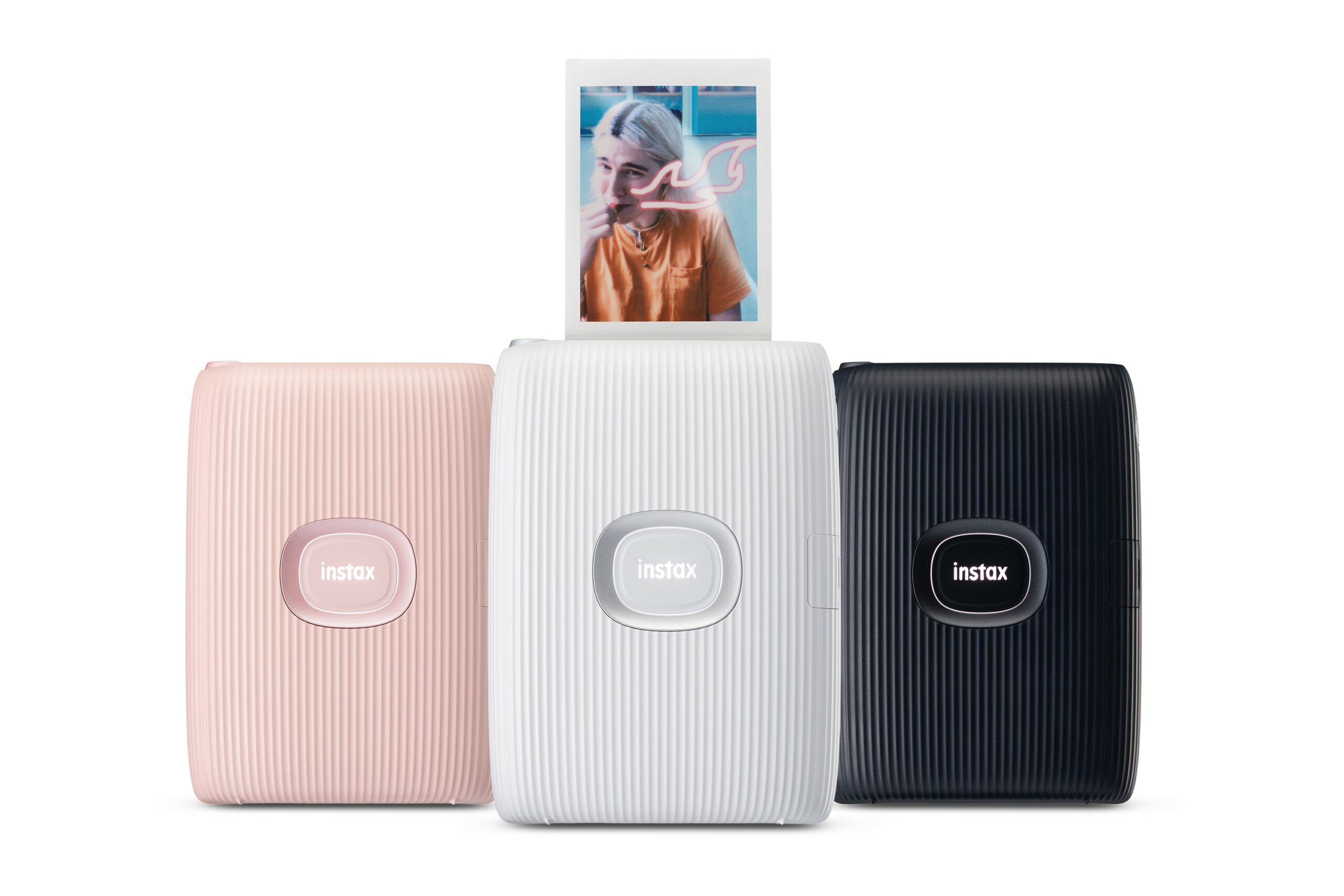Editor's Choice
Editor’s Choice: Instax Mini Link 2
Printers are far from extinct, and keep being reinvented, as Fujifilm’s new Instax smartphone printer shows. By ARTHUR GOLDSTUCK
Share
- Click to share on Twitter (Opens in new window)
- Click to share on Facebook (Opens in new window)
- Click to share on LinkedIn (Opens in new window)
- Click to email a link to a friend (Opens in new window)
- Click to share on Reddit (Opens in new window)
- Click to share on WhatsApp (Opens in new window)
- Click to share on Pinterest (Opens in new window)

This week’s Editor’s Choice was a recent choice for Gadget of the Week. The new accolade is given to products that represent a significant advance in technology, or a remarkable approach to innovation or user needs. The Instax Mini Link 2 from Fujifilm is Editor’s Choice for the week starting 10 October 2022.
What is it?
Three years ago, Fujifilm startled the market with the Instax Mini Link, a portable printer designed specifically for smartphone photos. Now, it has released a second generation of the device, the Link 2, which draws on the learnings of the original, and adds enticing new features.
It’s a competitive market, with both Polaroid and Kodak turning to on-the-spot printing of smartphone photos to help them keep coming back from the dead. In some departments, their portable printers are superior, but they can’t match the cool credentials of the Instax devices.
It is a rechargeable printer, using Bluetooth to transfer images from a smartphone. Most significantly, the Link 2 is fast: from the point of transferring an image from a smartphone to the device, it begins printing in about 15 seconds, and can produce around 100 prints per charge.
It offers an astonishing innovation that sets it apart: InstaxAiR, an augmented reality (AR) effect that works through the dedicated Link 2 app. It allows users to add graphic effects to prints, including bubbles, petals, neon, spray paint or a glitter look.
But that is not nearly as impressive as “drawing in the air”: by holding the printer, pressing the feature button on top, and aiming the side LED lens to draw in the air, what is drawn then appears on the print preview in the app. If the user is satisfied with the image, and hits print, the “air drawing” appears on the photo that is then printed out.
Fujifim has added a further solidly social element to this feature, underlining the fact that it is not simply a case of throwing specs at the device. They can record a video of the drawing being made and share it as a QR code that appears on the print. Anyone can then scan the QR code and view the video on their own phones, download it, or share it on social media.
Other features include customising Instax prints with Image Modes, Design Frames, Stickers and more.
Fujifim says: “The Instax Mini Link 2 app contains a variety of design elements that can be overlaid onto the selected image for a one-of-a-kind Instax instant print. Users can also use their finger to draw a picture on a photo; select the best artistic filters; or manually adjust brightness, contrast and the saturation of the image. If it’s difficult to choose between images, simply combine up to eight pictures into a single Instax print via the collage feature.
Finally, when printing users can choose between two image colour modes – Instax-Rich Mode for deep, enhanced colours or Instax-Natural Mode for a more original look.”
Fujifim has not forgotten regular cameras in its push to add new capabilities to smartphone cameras. The printer can also connect to the Fujifilm X-S10 mirrorless digital camera, so that images can be printed from the camera as well. The capability extends to other Fujifilm digital camera via the Fujifilm Camera Remote app.
The Link 2 can used with the new Instax Mini Spray Art instant film, which features a colourful rainbow spray design that reflects light – designed to complement the InstaxAiR feature.
This new film variety is also expected to be available in August,
What does it cost?
The Instax mini Link 2 printer is available in Soft Pink, Clay White and Space Blue, and retails for a suggested R2,799 including VAT. A pack of Instax Mini Spray Art instant film sells for a recommended retail price of R180 including VAT.
Why does it matter?
It revives printing at a time for a highly specific need at the very time when people are finding they have that need. By the same token, it fills a major social gap in the highly social activity of taking photos and selfies among friends and family.
What are the biggest negatives?
• The quality of images is substantially lower than that of regular photo printers.
• The cost of photo printing film is high.
• The device itself is costly for low- and mid-range phone users who have not paid a lot more than that for their handset.
What are the biggest positives?
• It is quick and easy to use.
• It looks great, and adds a wonderful vibe to social activity.
• The ability to print a phot immediately after taking it, and showing it around, far outweighs the lack of glossy photo print quality.
* Arthur Goldstuck is founder of World Wide Worx and editor-in-chief of Gadget.co.za. Follow him on Twitter on @art2gee
Share
- Click to share on Twitter (Opens in new window)
- Click to share on Facebook (Opens in new window)
- Click to share on LinkedIn (Opens in new window)
- Click to email a link to a friend (Opens in new window)
- Click to share on Reddit (Opens in new window)
- Click to share on WhatsApp (Opens in new window)
- Click to share on Pinterest (Opens in new window)
| Thank you for Signing Up |

















